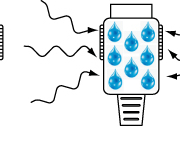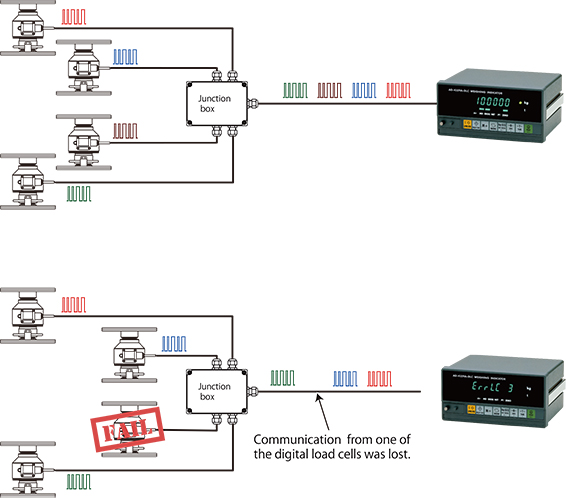Don’t overlook resistors
When one of our experienced engineers was visiting a customer site, he received a complaint that, “If a new scale is made with A&D load cells and indicators, the indicator value shifts tens of digits in an hour”.
The engineer carefully inspected the location and checked everything he could think of, such as loose screws or bonding terminals, soiled PCBs, the material quality of the load cell cables and terminal blocks, and the presence of shielded wiring. Still, when it came time to leave, he still hadn’t found the cause.
However, the always careful engineer thought, “All that’s left is the summing box the customer made!” and then asked to borrow the PCB inside the summing box*.
When he got back, he showed me the board. From looking at the terminal block made from PBT resin, which has good insulation properties, and the expensive-looking, shiny-black resistor, it was impossible to see any problems anywhere.
Still, I tried putting a magnet near the lead wire of the resistor just to be sure. The magnet was forcefully pulled to the lead and stuck to it with a snap. In other words, it was highly likely that the lead wire of the resistor contained iron.
Because iron is both inexpensive and strong, it is used in many applications. However, thermoelectric force occurs easily between iron and copper, so it is not suited for circuits that handle tiny voltages.
In this case above, the lead wire of the resistor acted as a thermocouple* and converted a small temperature imbalance to a voltage, which was output to the indicator.
Later, it was confirmed that the resistor was designed for heat and impact resistance. The lead wire was a special type that used copper wire with an iron core. We solved the problem by showing the customer resistors with low thermoelectric force.
The experience made me acutely aware that even resistors cannot be treated lightly.
*Summing box
A summing box connects the wiring of each load cell when making a scale that connects to multiple load cells. Typically, resistance (buffering resistance) is put in so that the output of a load cell doesn’t influence the others. This resistance is inserted into the output (SIG+, SIG-) of each load cell and must have low temperature coefficient and measurement error.
*Thermocouple
A device that converts temperature difference into voltage. Generally, it is a junction of different metals.
There are various types suited for different temperature ranges and applications.








